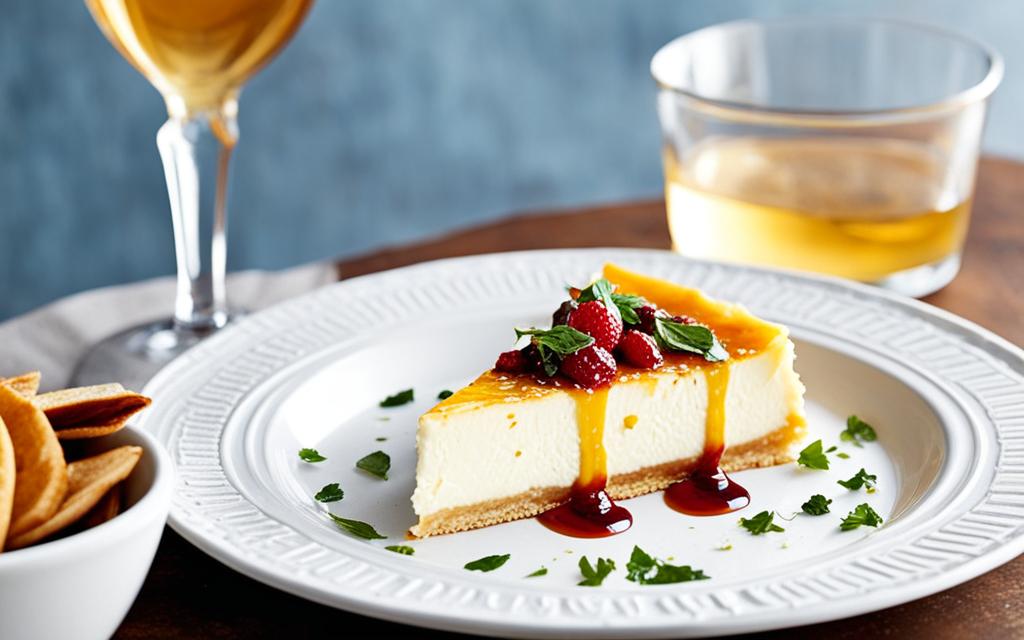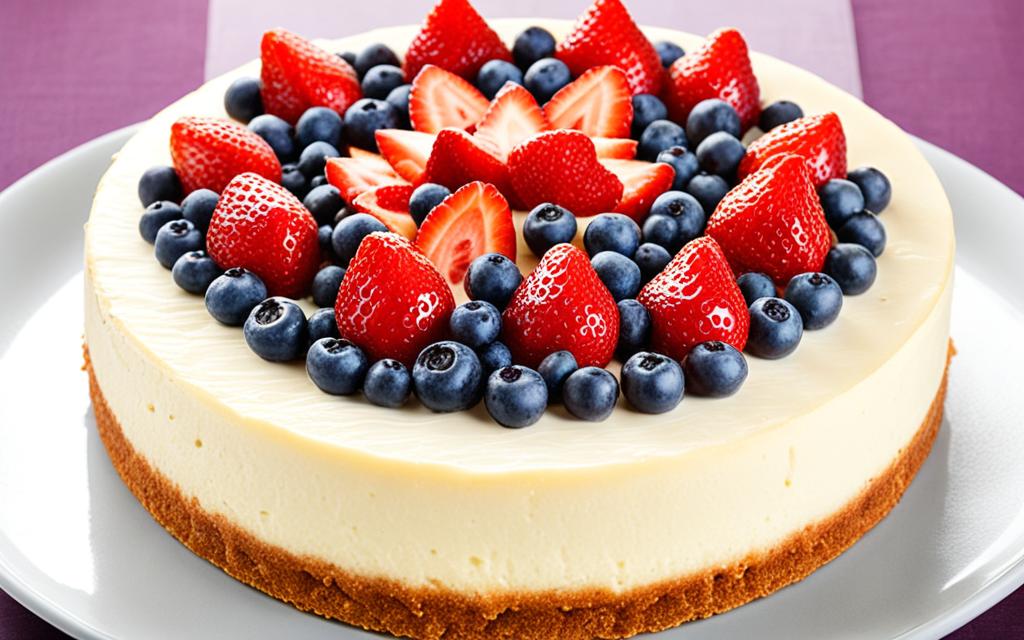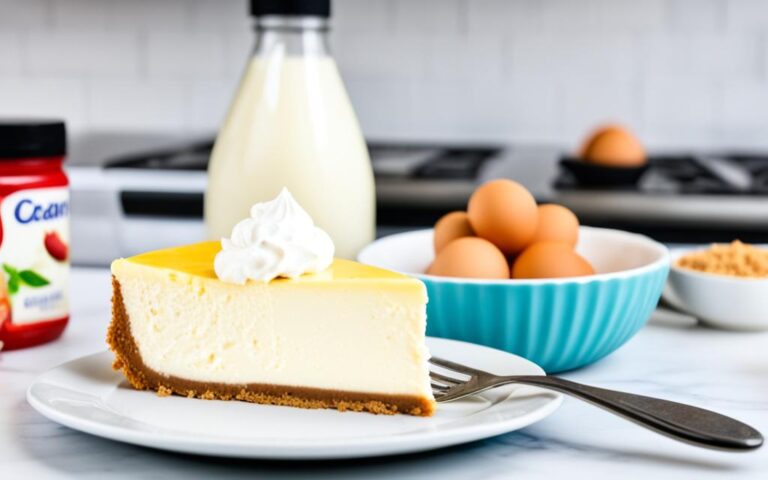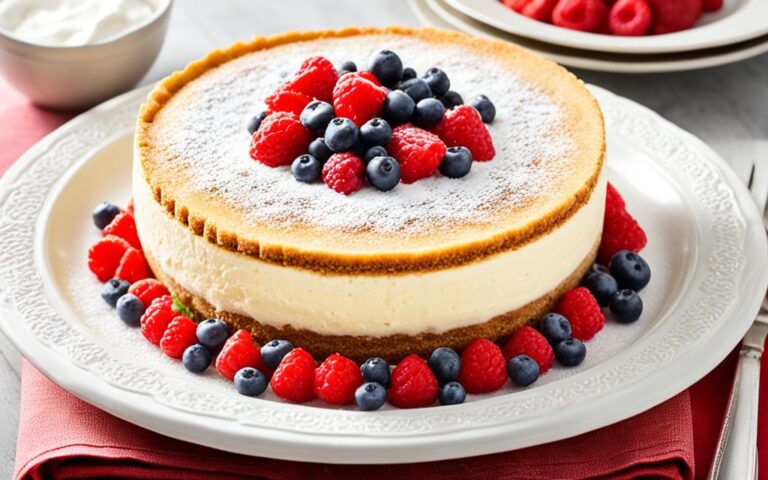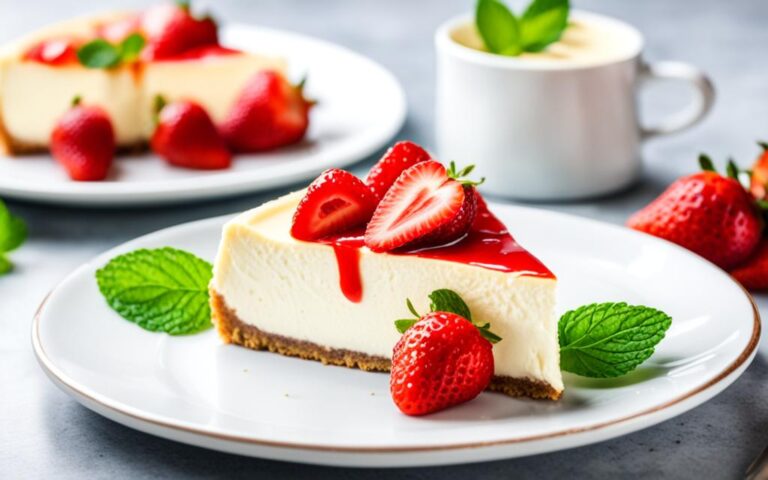The Tradition of Cheesecake in Greece: A Delicious History
Views: 1
Cheesecake is often linked to New York or sweet flavors like chocolate. But, its beginnings go back to ancient Greece. Yes, you read that right! The story of this tasty treat starts in Greece.
The early version of cheesecake was created on the island of Samos over 4,000 years ago. It was a blend of fresh cheese, flour, and honey. Baked on an earthenware griddle, this dessert was a hit, even back in 776 BC during the first Olympic Games. Athletes were served this simple but yummy dish.
Over the years, cheesecake changed and became known throughout Europe. By the Middle Ages, a pastry base was often part of the recipe. The English loved it too, as seen by the many cheesecake versions in their old cookbooks.
The 1730s marked an important time for cheesecake in Philadelphia, where the “Cheesecake House” tavern became famous. This dessert was even in Martha Washington’s cookbook, showing its early American appeal.
In the 19th century, more flavors like lemon and vanilla were added. But, the big breakthrough came in the 1930s with the American-style cheesecake, using cream cheese. This change took New York by storm.
Today, cheesecake is loved by many around the globe. It’s a common treat in restaurants, winning people over with its smooth texture and tasty flavors. No matter if you like traditional or new kinds, cheesecake is a special tradition with deep links to Greek beginnings.
A Delicious Greek Delight: The Ancient Recipe
Cheesecake comes from Greece, where it all began. The ancient Greeks were experts at making it. About 230 AD, a writer named Athenaeus noted down the first cheesecake recipe. This shows how much people have loved cheesecake over time.
This recipe uses easy-to-find ingredients like eggs, honey, and lemon. It also has pot cheese, which is like cottage cheese, along with sour cream or yogurt. The mix of these makes the cheesecake creamy, tangy, and sweet.
To make it, they would take the cheese and mix it until smooth. Then, they’d add honey and flour in a pan. This mixture was heated together, making a delicious dessert.
The Romans later changed the Greek recipe. They included eggs and sometimes baked it in a pastry. This made it even more special. In the 1st century BC, Marcus Cato wrote a recipe for this version. It shows how much people still loved cheesecake.
You can try making a version that brings ancient Athens to your kitchen. Start by mixing egg yolks with honey, lemon, and more. Bake it with a crust made from crumbs and nuts. You’ll end up with a tasty cheesecake that also takes you on a journey through time.
Baking Instructions
- Preheat your oven to 325°F (163°C) and prepare a 9-inch (23 cm) springform pan by greasing it.
- In a medium mixing bowl, combine the cheesecake filling ingredients: 3 cups of pot cheese (similar to cottage cheese), 1 cup of sour cream, 4 eggs, 1 cup of honey, the juice and zest of 1 lemon, and 1/4 cup of flour. Mix well until smooth and creamy.
- Prepare the crust by mixing 1 1/2 cups of graham cracker crumbs, 1/2 cup of finely chopped nuts (such as walnuts or almonds), and 1/4 cup of melted butter in a separate bowl.
- Press the crust mixture evenly into the bottom of the prepared springform pan, creating a solid base for the cheesecake.
- Pour the cheesecake filling over the crust, spreading it out evenly.
- Bake in the preheated oven for 50-60 minutes, or until the cheesecake is set around the edges but still slightly jiggly in the center.
- Remove the cheesecake from the oven and let it cool to room temperature. Then, refrigerate for at least 4 hours, or preferably overnight, to allow it to fully set.
- Before serving, run a knife around the edges of the pan to loosen the cheesecake, then remove the sides of the springform pan. Slice and serve chilled. Enjoy!
| Ingredients | Quantity |
|---|---|
| Eggs | 4 |
| Honey | 1 cup |
| Lemon (juice and zest) | 1 |
| Flour | 1/4 cup |
| Pot cheese (similar to cottage cheese) | 3 cups |
| Sour cream | 1 cup |
| Graham cracker crumbs | 1 1/2 cups |
| Nuts (e.g. walnuts or almonds) | 1/2 cup |
| Butter (melted) | 1/4 cup |
The Sweet Versatility of Greek Honey
Greek honey is truly amazing. It adds magic to any dish it’s in. It’s a must for food lovers. You can drizzle it on yogurt or mix it in salad dressings. Greek honey always stands out with its rich flavor.
Greek honey shines best in baking. It makes cakes, cookies, and pastries taste incredible. Just think about baklava, a Greek dessert. The honey makes it sweet, sticky, and unforgettable.
Now, getting your hands on Greek honey is simple. You could visit Greece or just order it online. By using this special honey, you can make dishes that everyone will remember.
FAQ
What is the origin of cheesecake?
Cheesecake dates back over 4,000 years to the ancient Greeks on Samos. Their version was made with cheese, flour, and honey, then baked. It spread to different places over time, including medieval Europe and America.
How was cheesecake made in ancient Greece?
The ancient Greek cheesecake recipe was detailed by Athenaeus in 230 AD. It had ingredients like eggs, honey, lemon, flour, cheese, and cream. The method included pounding cheese smooth, mixing with honey and flour, then heating and chilling it.
It was served later. You can make a similar cheesecake today using these instructions.
How can Greek honey be used in baking?
Greek honey is great for baking, adding a unique taste and smell. It’s perfect for desserts like baklava, complementing phyllo dough. You can find Greek honey online or in Greece to make your treats tastier.

